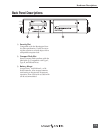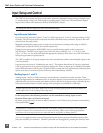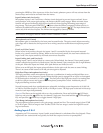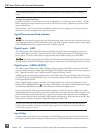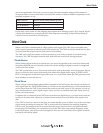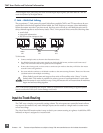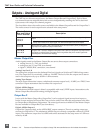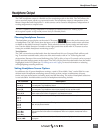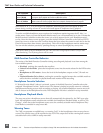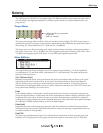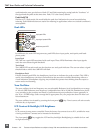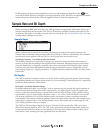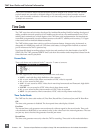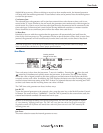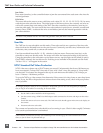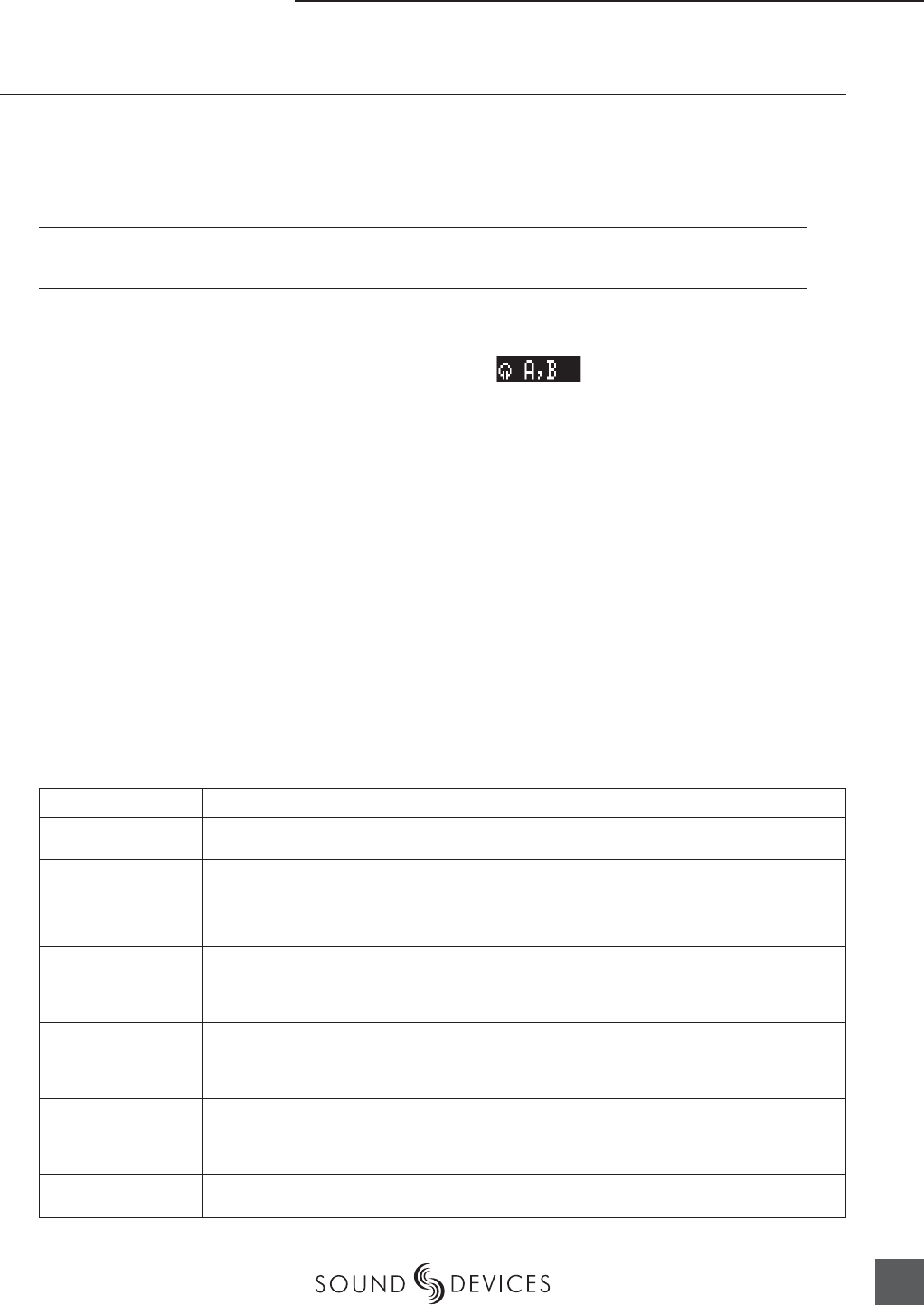
Headphone Output
21
Headphone Output
The 744T headphone output is a fl exible tool for monitoring audio in the fi eld. The 744T allows the
user to monitor inputs, tracks, or post-record tracks. The headphone output is independent of the
Master Output Bus and Output Bus 2—audio sources can be routed to headphones independent of
routing assignments to output buses.
The 744T is capable of driving headphones to extremely high sound pressure levels. Hearing experts
advise against exposure to high sound pressure levels for extended periods.
Choosing Headphone Sources
The headphone source display on the main LCD screen ( ) shows the audio sources sent
to headphones. The 744T comes from the factory with 10 preset headphone audio source selections
available on the Multi Function Controller. These selections include inputs, tracks and track moni-
tors. Turn the Multi-Function Controller on the right panel when at the main LCD screen to select
among the available headphone monitoring sources.
Track Monitor
The 744T can monitor recorded audio from the internal hard drive or Compact Flash while record-
ing. To monitor recorded tracks, select one of the track modes with an “m” following the track
designations. Because of the record buffering of the 744T, a delay of up to 12 seconds can be expected
before recorded audio appears at the output. The 744T will play back recorded audio from the media
highlighted in the LCD panel (see File Management and Copying for more information on selecting
and highlighting recording medium).
Setting Headphone Source Options
In addition to the 10 preset headphone routings, a total of 20 available “slots” can be fi lled in a user
defi ned order. Headphone monitoring sources can be set from various combinations of inputs,
tracks, and post-record tracks, including stereo and MS decoding. The order of headphone selections
is user selectable. Available audio sources for headphone monitoring include:
HP Sources Description
Inputs 1,2
Inputs 3,4
Stereo monitoring of input pairs. Inputs 1 and 3 are assigned to left headphone output; inputs 2 and
4 are assigned to right headphone output.
Tr ack s A,B
Tr ack s C,D
Stereo monitoring of track pairs. Tracks 1 and 3 are assigned to left headphone output; tracks 2 and
4 are assigned to right headphone output. Upon playback, will play as track monitor.
Monitor A,B
Monitor C,D
Stereo monitoring of playback (post-record) track pairs. Tracks 1 and 3 are assigned to left head-
phone output; tracks 2 and 4 are assigned to right headphone output.
Input 1
Input 2
Input 3
Input 4
Solo monitoring of selected input. This signal is sent to both sides of the headphones.
Tr ack A
Tr ack B
Tr ack C
Tr ack D
Solo monitoring of selected track. This signal is sent to both sides of the headphones. Upon play-
back, will play as track monitor.
Monitor Am
Monitor Bm
Monitor Cm
Monitor Dm
Solo monitoring of playback (post-record) track. Highlighted media is source of monitor program.
This signal is sent to both sides of the headphones. When not in playback, headphones have no
program.
Inputs 1,2 MS
Inputs 3,4 MS
Stereo monitoring of discrete M (mid) and S (side) input pairs. Highlighted media is source of moni-
tor program.



